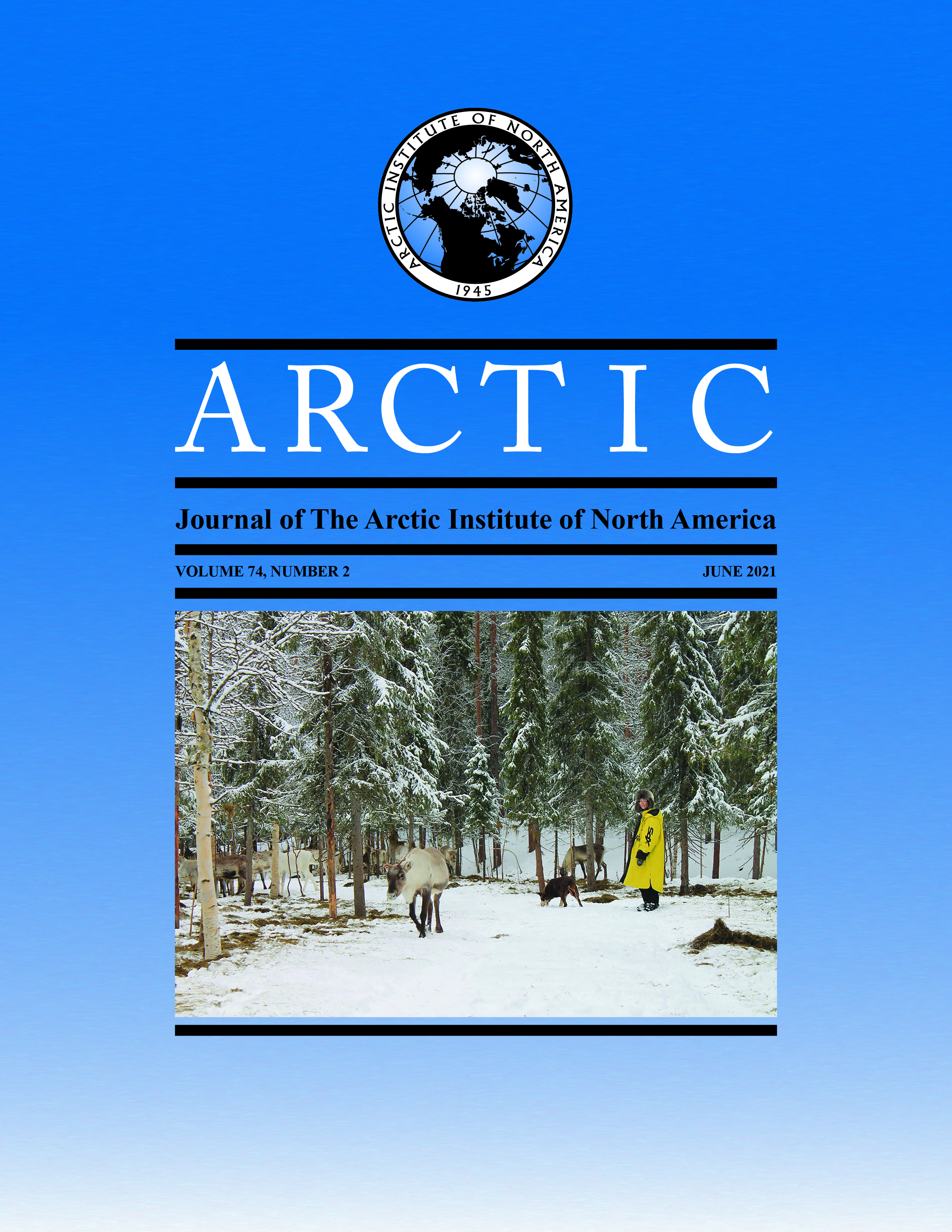Ringed Seal Diet and Body Condition in the Amundsen Gulf region, Eastern Beaufort Sea
DOI:
https://doi.org/10.14430/arctic72447Ключевые слова:
ringed seal; Pusa hispida; diet; Amundsen Gulf; Beaufort Sea; Arctic; climate changeАннотация
Diet from stomach contents and body condition from morphometric measurements were obtained for 169 (108 stomachs analysed) ringed seals (Pusa hispida) for the Amundsen Gulf region in the western Canadian Arctic from 2015 to 2018. Sampling was from subsistence-harvested seals from the three communities of Paulatuk (spring, summer, and autumn), Sachs Harbour (summer), and Ulukhaktok (winter), Northwest Territories. Stomach contents were separated through sieves and by hand, and taxa identified to the lowest taxonomic level possible and weighed. Stomachs were fullest (by weight and prey count) in the autumn, which suggests that foraging was most intense and successful at that time. A total of 93 prey taxa, including 17 fish and 76 invertebrate species were identified. Several fish and invertebrate species were regularly found together, the most common being Arctic cod (Boreogadus saida), sand lance (Ammodytes hexapterus), capelin (Mallotus villosus), and hyperiid amphipods (Themisto spp.). Condition measurements inferred from blubber thickness, although showing considerable variation among sites and years, had a seasonal relationship with maximal depth during the autumn and winter. Overall, the diet of ringed seals in Amundsen Gulf was broadly similar to those reported from other areas while also indicating some degree of regional specificity. When compared to the diet of ringed seals in the same area in the 1980s, the results presented here were more diverse, with new or increased numbers of subarctic species (e.g., saffron cod, Eleginus gracilis) found in the samples. This finding is a likely consequence of climate warming, as increasing numbers of subarctic species move north with warming ocean temperatures in the Arctic.
Скачивания
Загрузки
Опубликован
Выпуск
Раздел
Лицензия
Copyright (c) 2021 ARCTIC

Это произведение доступно по лицензии Creative Commons «Attribution» («Атрибуция») 4.0 Всемирная.


